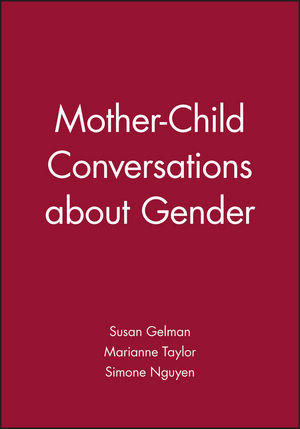Mother-Child Conversations about GenderISBN: 978-1-4051-3188-9
Paperback
152 pages
May 2004, Wiley-Blackwell
 |
||||||
This monograph provides the first in-depth look at how
mothers and young children talk about gender, to discover
the potential role of language in fostering gender stereotypes.
Mothers and their sons/daughters, who were 2-½,
4-½, or 6-½ years of age, were videotaped discussing a
picture book that focused on gender. A consistent contrast
was found between mothers’ explicit endorsement
of gender stereotypes and implicit emphasis on gender.
Although mothers rarely expressed gender stereotypes
directly, they emphasized gender concepts indirectly, by
referring to gender categories, providing gender labels,
contrasting males and females, and giving approval to
their children’s stereotyped statements. With increasing
age, children were more focused on gender categories
and stereotypes, but also more gender-egalitarian.
Gender-egalitarian items (e.g., a female firefighter) were
associated with less overt stereotyping, but also with more
implicit talk about gender. Altogether, mothers’ language
input conveys a wealth of subtle messages about gender
from which children may construct their own beliefs.
mothers and young children talk about gender, to discover
the potential role of language in fostering gender stereotypes.
Mothers and their sons/daughters, who were 2-½,
4-½, or 6-½ years of age, were videotaped discussing a
picture book that focused on gender. A consistent contrast
was found between mothers’ explicit endorsement
of gender stereotypes and implicit emphasis on gender.
Although mothers rarely expressed gender stereotypes
directly, they emphasized gender concepts indirectly, by
referring to gender categories, providing gender labels,
contrasting males and females, and giving approval to
their children’s stereotyped statements. With increasing
age, children were more focused on gender categories
and stereotypes, but also more gender-egalitarian.
Gender-egalitarian items (e.g., a female firefighter) were
associated with less overt stereotyping, but also with more
implicit talk about gender. Altogether, mothers’ language
input conveys a wealth of subtle messages about gender
from which children may construct their own beliefs.



